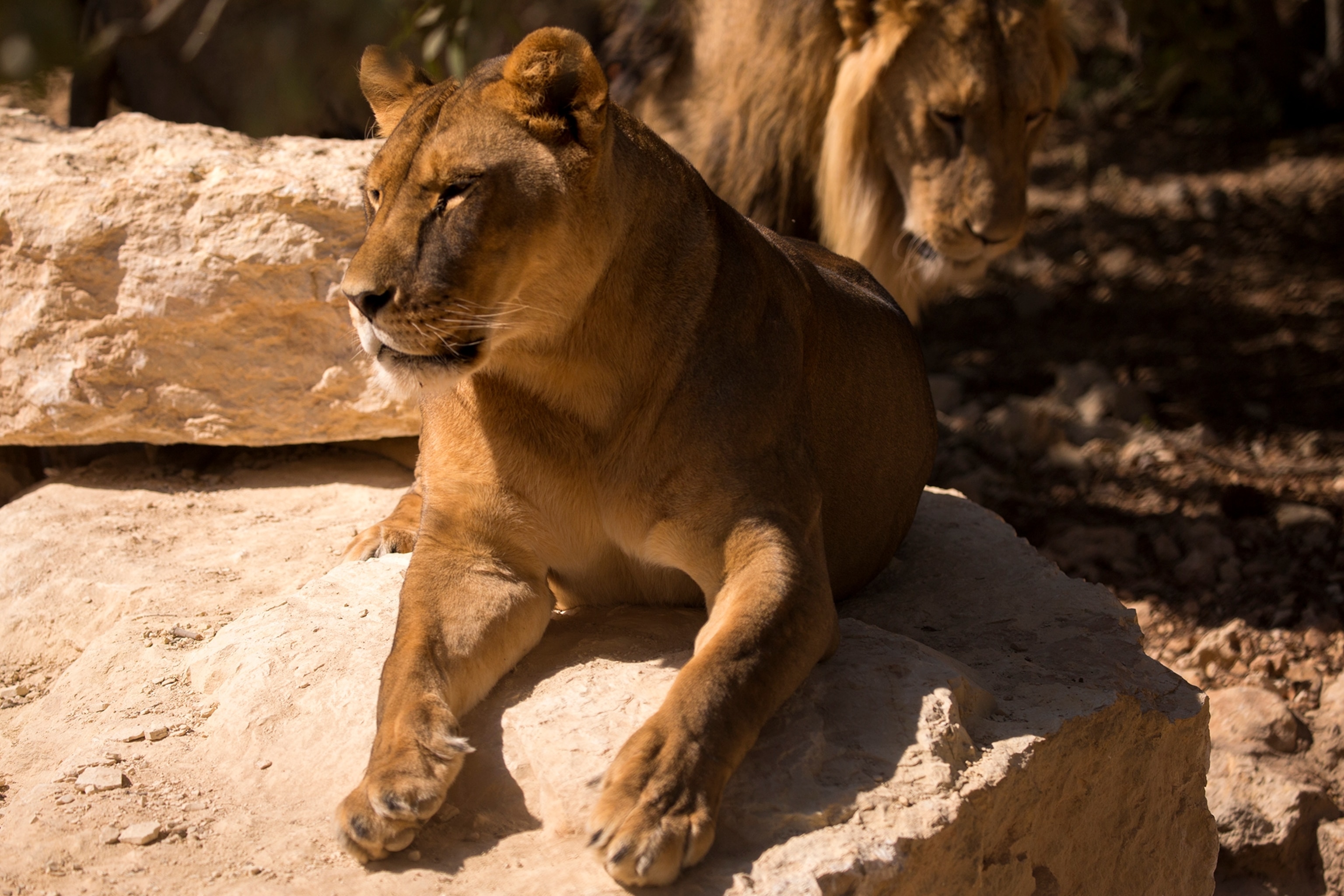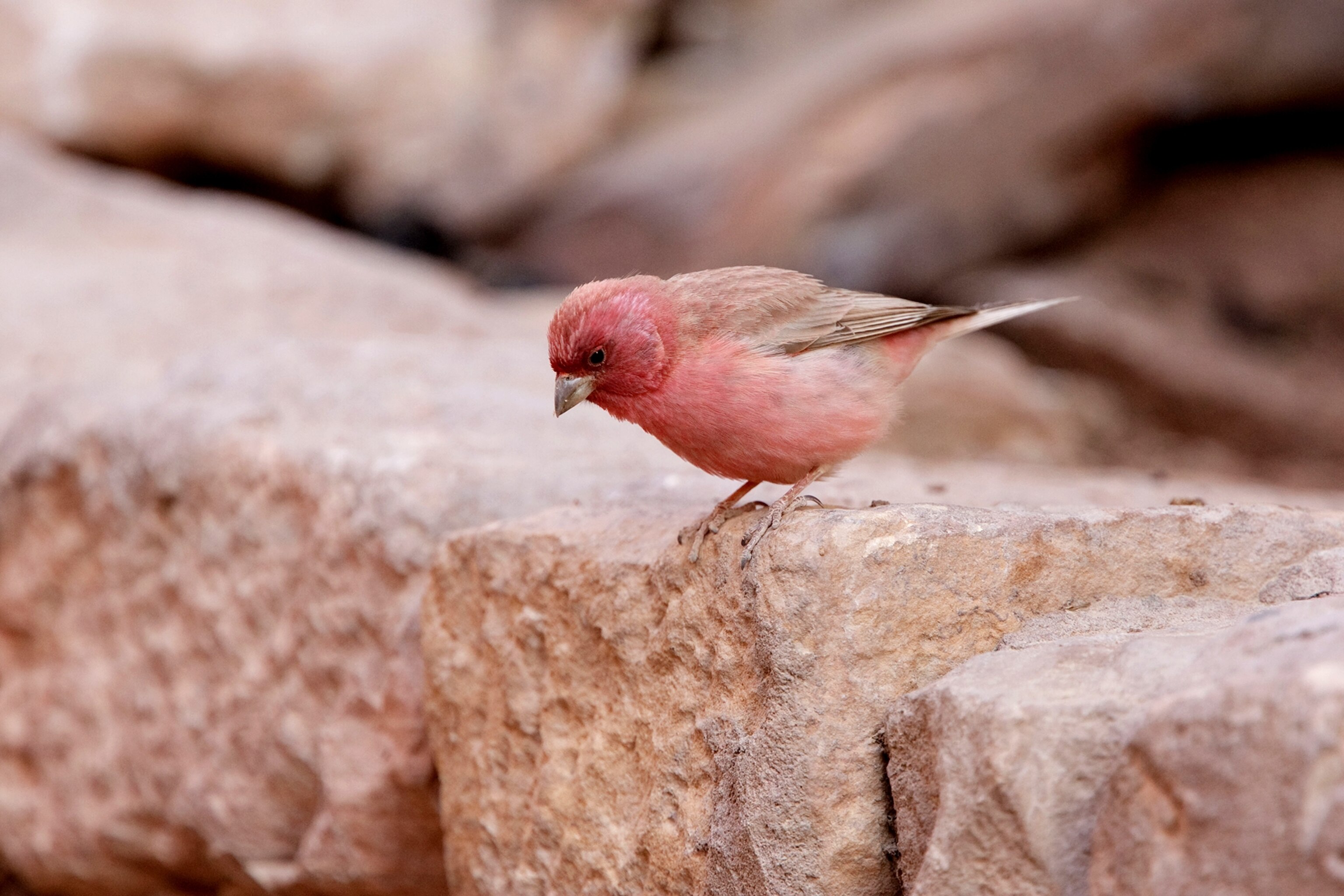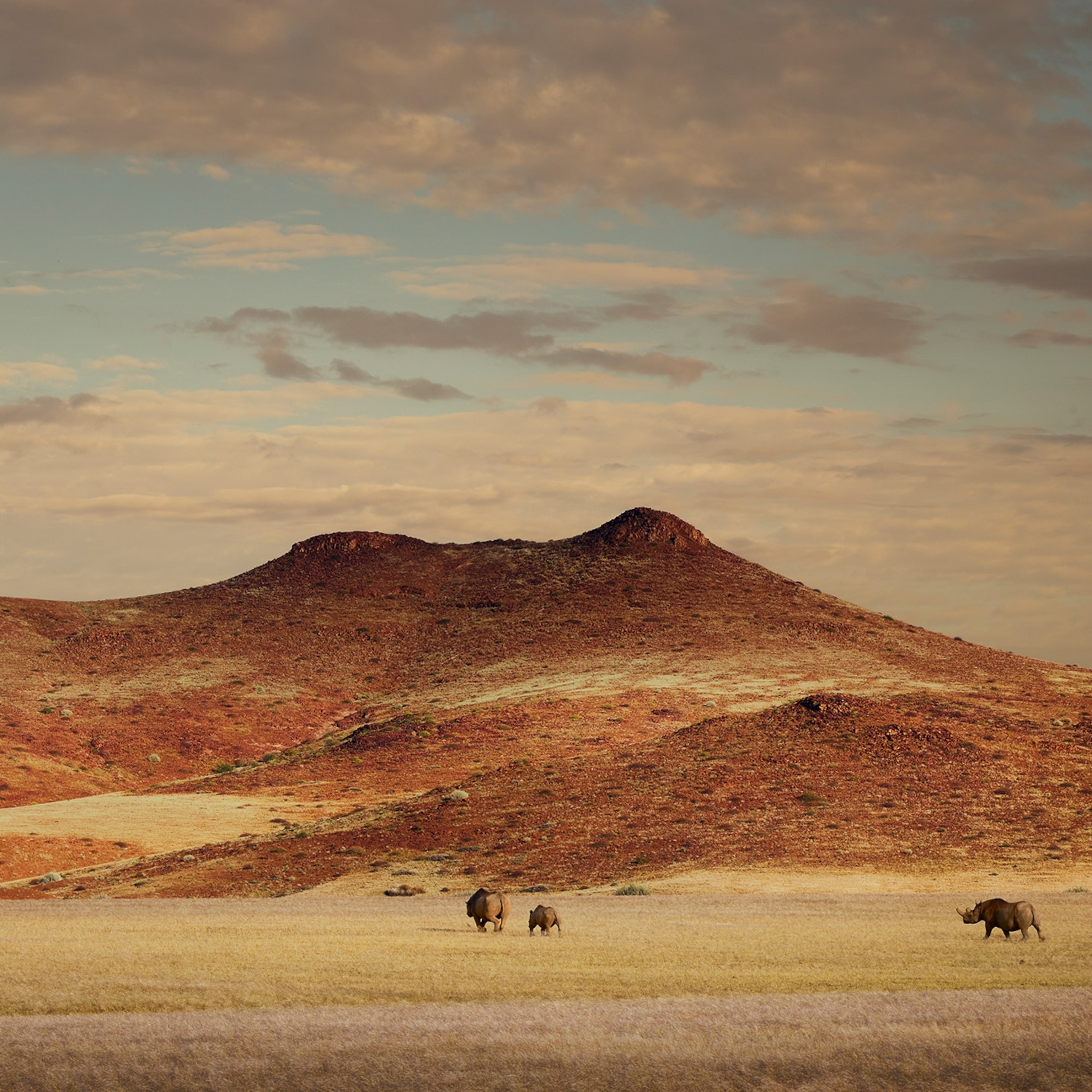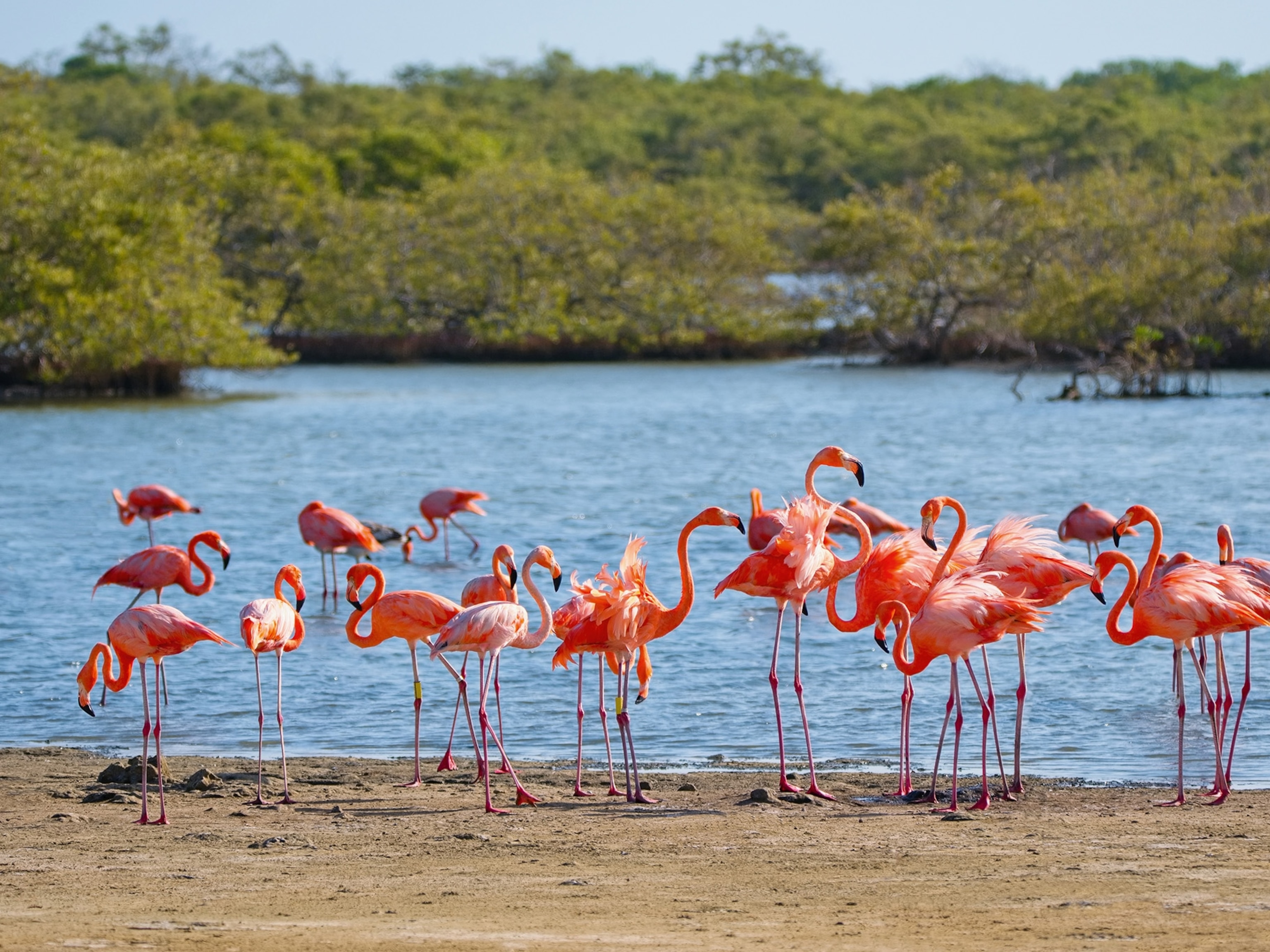
Top Five Animal Encounters in Jordan
Wish you could step inside the animal kingdom? Visitors to Jordan can ride camels through the desert, meet rescued lions and tigers at a wildlife sanctuary, and spot roaming ostriches on a protected reserve.
Getting off a camel is way more difficult than getting on.
First the dromedary drops its front two legs, kneeling low in the front, while its back legs stand fully extended. If you don’t lean back, you can tumble forward, headfirst into the sand.
Camels represent one of the oldest domesticated animals in Jordan—nomads have ridden them across the open desert for thousands of years. Instead of merely straddling the camel, ride like a Bedouin by bending your left leg around the camel’s hump, left foot tucked under your right knee, with the right foot dangling forward. This makes it easier to stay on when the camel runs. They can sprint up to 40 miles an hour!
The Royal Stables

Even faster are the native Arabian horses, identified by their proud neck, the high prick of their ears, large oval nostrils, and the fancy arch of the tail. Visit the Royal Stables in Amman (by appointment only) and fall in love with the breed in person.
“The love for horses cannot be explained—it can only be felt,” says Iftikhar Hussain, director of the Royal Stables. These 256 horses are considered a national treasure, most of them descended from seven noble mares that belonged to King Abdullah I.
The Al Ma'wa Wildlife Sanctuary

Beyond her stables, Princess Alia bint Hussein leads an inspiring foundation that works to protect all animals in Jordan, from the smallest snakes and stray dogs and cats, to lions and tigers rescued from unlicensed zoos, the illegal wildlife trade, or abusive circuses. The Princess Alia Foundation focuses on compassion for all living things.
Join the effort by going to the foundation’s Al Ma’wa wildlife sanctuary (near Ajloun Forest Reserve), where you can visit the rescued animals as they are being rehabilitated. It’s also a great way to get acquainted with some of the region’s wildlife, like the Syrian brown bear (now extinct in neighboring Syria), Arabian wolves, and the striped hyena.

Spotting Native Wildlife
Referenced in the Old Testament, striped hyenas are approaching endangered status globally but are protected in Jordan, where they are found in more remote areas. Like wolves, they can very be elusive in the wild, but the lucky hiker is likely to see them—or at least their paw prints—in places like the Dana Biosphere Reserve. Smaller mammals like the sand cat and rock hyrax abound in these desert mountains, while larger ungulates are best spotted in the open spaces in the south and east of the country.
By far Jordan’s best “safari” experience is inside the Shaumari Wildlife Reserve, where threatened species thrive as part of conservation breeding programs. Native ostrich, onager, and desert gazelle run freely, along with herds of Arabian oryx.
Hunted to near extinction, the Arabian oryx helped to inspire the establishment of Jordan’s Royal Society for the Conservation of Nature.
Keep in mind that the Dead Sea and elongated Jordan Valley are an extension of the Great Rift Valley of East Africa, a vital wildlife corridor expressed in holdover species like the hyena and gazelle (not so many centuries ago, Jordan had native cheetahs and lions). Today, that same geography defines Jordan as a vital migratory flyway between three continents: Asia, Africa, and Europe.
Bird-watching

In Jordan, the real joy of birding lies in the utter unpredictability of what you might see, from giant snake eagles to flamingos. The extreme range of habitats in such a compact country means bird-watchers have a chance of seeing a higher percentage of the more than 435 bird species that have been recorded in Jordan.
- National Geographic Expeditions
Pretty, pink-breasted, and very vocal, the Sinai rosefinch is the stunning national bird of Jordan. With blushing feathers that mimic the color of Petra’s ruins, these dainty little songbirds are best seen in Wadi Rum. Less colorful but still very chirpy, the unique Dead Sea sparrow nests annually near the streams and bushes of the Fifa Nature Reserve.
Serious birders cannot miss the Azraq Wetland Reserve, one of the last remaining true desert oases, inhabited year-round by waterbirds and a parade of migratory species in the spring and fall. Nothing compares to the fleeting, iridescent shine of the teal-and-cobalt Palestine sunbird, often spotted in the highlands in and around Wadi Dana (where there is a fantastic bird hide for the dedicated, patient bird-watcher).
Too often overlooked by beachgoers, the Aqaba Bird Observatory is a remarkable birding spot just outside the Red Sea port of Aqaba that attracts breeders like collared flycatchers and the green bee-eater as well as passerines like the Arabian babbler and waterbirds like the white-eyed gull. Less seasonal are Jordan’s vivid soaring birds that tend to stick around all year, like vultures and Hume’s tawny owl and pharaoh eagle owl.
Under the Sea
And don’t forget the animals beneath the surface—in summer, Jordan’s Red Sea coast is home to magnificent whale sharks, while 161 fish species call these coral reefs home all year round, including exotic clownfish and rare eels. Simply strap on a mask and snorkel, and you are bound to see them.
Despite some visitors’ first impressions of dust and desert, Jordan is alive on all fronts, thriving with protected animal populations in well-managed wild spaces. What’s more, Jordanians value their wildlife, taking pride in the fact that this remains one of the best spots to encounter animals in the Middle East. Just keep your eyes open and pack your binoculars. The quiet, patient traveler will always be rewarded.







